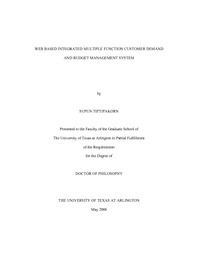| dc.description.abstract | Traditionally, most end-use residential consumers receive flat rate monthly electricity bills based on load profiling rate calculations from different utilities' consumer classes. Those flat rates do not relate and reflect the true and time-varying costs of electricity supply during actual time of consumptions. Without acknowledging the cost differences, consumers do not have any incentive to adjust their load consumption patterns, and inefficiencies of resource allocations can result. Cheaper-cost off-peak load users can end up paying to offset those expensive peak load users. Additionally, peak load users may still consume their loads without any awareness that their power networks may have already bound to dangerous constraints. Crises and markets failures are often originated from these wholesale and retail market disconnections. Avoidable investments to increase transmission or generation capacities to satisfy peak loads are unnecessarily spent, and the lead-times of such constructions can take several years.
Providing market signals for end-use consumers and enabling them to adjust their loads, consumers can shift away their loads from high market prices when the power systems are stressed. Demand response program (particularly real-time electricity pricing) can be a proper solution to link both supply wholesale and demand retail markets.
The Federal administrations perceive the necessities of electricity demand response programs and have passed the Energy Policy Act (EPAct) 2005 to provide supporting infrastructures and technologies for the demand response programs for all classes of consumers. Accordingly, this research realizes the coming developments and the vitality of the demand response for effective and efficient electric deregulations. The simple yet effective consumer-centered (contrast to utility-centered) load control strategies (Steps of Temperatures and Pricing Naming) are introduced and integrated to the web based integrated multiple function customer demand and budget management system. The proposed system can serve as a tool to assist end-use residential consumers for their load and budget managements in real-time pricing environments, like Illinois (the state where 4.5 million consumers can participate in such program). Other features can further add-on to enhance the proposed system to better reach end-use consumers (e.g., home security and surveillance system). | en_US |

